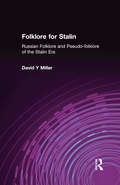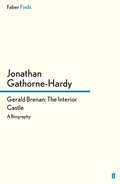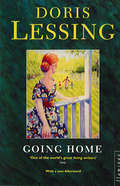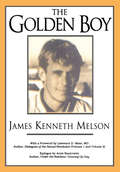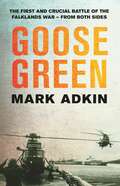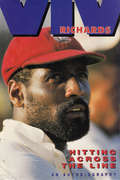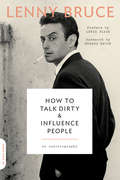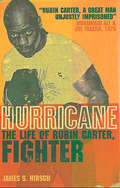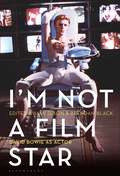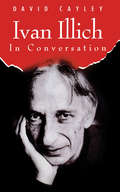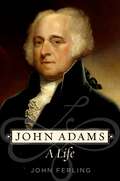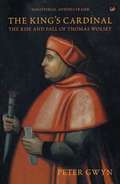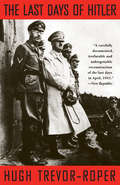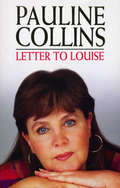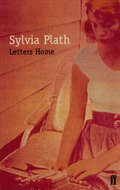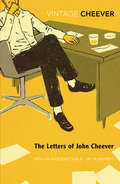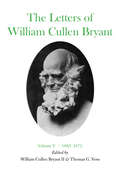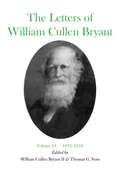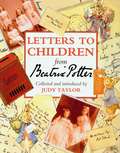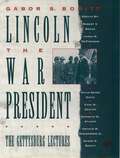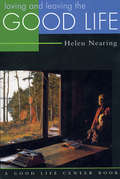- Table View
- List View
Folklore for Stalin: Russian Folklore and Pseudo-folklore of the Stalin Era
by Frank J. MillerAfter the First Congress of Soviet Writers in 1934, folklore, like literature, became an instrument of the political propagandist. Folklorists devoted considerable efforts to attending to what purported to be a rebirth of the Russian epic tradition, producing works of pseudofolklore that as often as not featured Joseph Stalin in the hero's role. Miller's account of this curious episode in the history of popular culture and totalitarian politics, and his synopses and translations of "classic" examples of folklore for Stalin, seek to serve as a resource not only for the study of contemporary folklore but also for the political scientist.
Gerald Brenan: A Biography
by Jonathan Gathorne-Hardy'A masterpiece which delights from first page to last.' TLS'Very clever, very funny and very bold.' Victoria Glendinning, TimesBorn in 1894 to a well-off military family, Gerard Brenan was expected to follow the family tradition. But at Radley school he discovered a love of books and an urge to break the mould, which led him to abscond to Europe for six months. After the First World War he went to Spain, where he found the inspiration for his life's work (and began an affair with Dora Carrington.) Come the 1930s his life changed again, with marriage and the outbreak of the Spanish Civil War, which inspired his masterpiece The Spanish Labyrinth (1943).Drawing on long personal acquaintance as well as a wealth of unpublished correspondence, Jonathan Gathorne-Hardy looks unflinchingly at the whole of this remarkable man of letters - from his venturesome spirit to his troublesome sexuality to his literary accomplishment.'By no means unworthy to stand beside P N Furbank's Forster, Michael Holroyd's Strachey or Quentin Bell's Woolf... Affectionate but acerbic, learned but witty, elegant but relaxed, [Gathorne-Hardy] entertains as consistently as he informs.' Independent on Sunday
Going Home
by Doris LessingFrom the winner of the Nobel Prize for Literature, a compelling account of her return to the land in which she grew up.
The Golden Boy
by Robert HatchThis is the first autobiography to be published by The Haworth Press.This is the first autobiography to be published by Harrington Park Press.The place is New York City. The time is the decade before the plague of AIDS. Thousands of gay men were living a free-wheeling lifestyle of club hopping, “score” hunting, sex without fear, and upward mobility. To none did The Big Apple offer greater rewards than to those young men who had the envied “male model” look.Author James Melson belonged to this exclusive clique: he was tall, blond, muscular, and very “straight looking.” He was a model at 19, and by 25, was a highly successful Wall Street banker. His good looks offered him immediate entry into exclusive clubs and onto the sexual fast track with actors, male models, and other members of the “Clique.”The author brings you behind the scenes into the lifestyle of the handsome “Clique”--providing details of the vigorous and entertaining excitement of the times. He exposes--for one of the few times in print--the lesser-known attitudes of the “Clique” and their disdain for “ugly faggots,” their obsession with strictly the chic and glamorous, and the fast lane life of partying and sex.For 200 pages, the reader is brought back to the era that for many older readers is just a memory, and for younger readers a time they never knew--when to be a “Golden Boy” was to be a prince, and sex was only fun and games.The Golden Boy autobiography ends when the author is diagnosed with AIDS, abandoned by a lover and friends, and left to look back on his life with a growing perspective.The role of “good looks” and people with AIDS is rarely talked about, particularly by gay survivors whose lesser appeal was once perhaps a curse but then ultimately their saving grace. This is not just another AIDS autobiography but a document dealing indirectly with this fact of life. The autobiography is introduced by Larry Mass, MD, an internationally recognized social historian/physician who examines the “Culture of Narcissism” in that era. Arnie Kantrowitz then presents an astonishingly frank and perhaps shocking Epilogue which will have many readers wanting to re-read the book.
The Golden Boy
by Robert HatchThis is the first autobiography to be published by The Haworth Press.This is the first autobiography to be published by Harrington Park Press.The place is New York City. The time is the decade before the plague of AIDS. Thousands of gay men were living a free-wheeling lifestyle of club hopping, “score” hunting, sex without fear, and upward mobility. To none did The Big Apple offer greater rewards than to those young men who had the envied “male model” look.Author James Melson belonged to this exclusive clique: he was tall, blond, muscular, and very “straight looking.” He was a model at 19, and by 25, was a highly successful Wall Street banker. His good looks offered him immediate entry into exclusive clubs and onto the sexual fast track with actors, male models, and other members of the “Clique.”The author brings you behind the scenes into the lifestyle of the handsome “Clique”--providing details of the vigorous and entertaining excitement of the times. He exposes--for one of the few times in print--the lesser-known attitudes of the “Clique” and their disdain for “ugly faggots,” their obsession with strictly the chic and glamorous, and the fast lane life of partying and sex.For 200 pages, the reader is brought back to the era that for many older readers is just a memory, and for younger readers a time they never knew--when to be a “Golden Boy” was to be a prince, and sex was only fun and games.The Golden Boy autobiography ends when the author is diagnosed with AIDS, abandoned by a lover and friends, and left to look back on his life with a growing perspective.The role of “good looks” and people with AIDS is rarely talked about, particularly by gay survivors whose lesser appeal was once perhaps a curse but then ultimately their saving grace. This is not just another AIDS autobiography but a document dealing indirectly with this fact of life. The autobiography is introduced by Larry Mass, MD, an internationally recognized social historian/physician who examines the “Culture of Narcissism” in that era. Arnie Kantrowitz then presents an astonishingly frank and perhaps shocking Epilogue which will have many readers wanting to re-read the book.
Goose Green: The first crucial battle of the Falklands War
by Mark AdkinReissued for the 40th anniversary of the Falklands conflictThe most in-depth and powerful account yet published of the first crucial clash of the Falklands war - told from both sides.'Thorough and exhaustive' Daily Telegraph'An excellent and fast paced narrative' Michael McCarthy, historical battlefield guideGoose Green was the first land battle of the Falklands War. It was also the longest, the hardest-fought, the most controversial and the most important to win. What began as a raid became a vicious, 14-hour infantry struggle, in which 2 Para - outnumbered, exhausted, forced to attack across open ground in full daylight, and with inadequate fire support - lost their commanding officer, and almost lost the action.This is the only full-length, detailed account of this crucial battle. Drawing on the eye-witness accounts of both British and Argentinian soldiers who fought at Goose Green, and their commanders' narratives, it has become the definitive account of most important and controversial land battle of the Falklands War. A compelling story of men engaged in a battle that hung in the balance for hours, in which Colonel 'H' Jones' solo charge against an entrenched enemy won him a posthumous V.C., and which for both sides was a gruelling and often terrifying encounter.
Hard Times in Paradise: An American Family's Struggle To Carve Out A Homestead In California's Redwood Mountains
by David Colfax Micki ColfaxAn account of one family's life in a redwood forest describes how the Colfax's lived without electricity, running water, or a phone, and how they educated their sons, three of whom were accepted to Harvard on full scholarships.
Hitting Across the Line: An Autobiography
by Viv RichardsThe career of cricket’s greatest enigma, Viv Richardsm spans a tumultuous 20 years. Born Isaac Vivian Alexander Richards in Antiqua he made his first-class debut for the leeward Islands in 1971, and his Test debut for the West Indies in 1974. Richards writes about his family, his time at Somerset with his great friend Ian Botham, which ended in 1986 amidst bitter controversy. Hitting Across the Line is the forthright and perceptive autobiography of a cricketing genius
How to Talk Dirty and Influence People: An Autobiography
by Lenny BruceDuring the course of a career that began in the late 1940s, Lenny Bruce challenged the sanctity of organized religion and other societal and political conventions and widened the boundaries of free speech. Critic Ralph Gleason said, "So many taboos have been lifted and so many comics have rushed through the doors Lenny opened. He utterly changed the world of comedy.” He died in 1966 at the age of 40. His influence on the worlds of comedy, jazz, and satire is incalculable, and How to Talk Dirty and Influence People--now republished to coincide with the 50th anniversary of Lenny Bruce's death--remains a brilliant existential account of his life and the forces that made him the most important and controversial entertainer in history.
Hurricane: The Life Of Rubin Carter, Fighter (Biography Ser.)
by James S. HirschRubin Carter is the Hurricane. A pistol shot in a bar room ruined his chances of becoming the middleweight champion of the world. But he did not fire the gun. Nineteen long years in prison, a massively high profile campaign to release him that failed, and the persistence of an unlikely supporter finally saw him free.
I’m Not a Film Star: David Bowie as Actor
by Ian Dixon and Brendan BlackThe first collection dedicated to David Bowie's acting career shows that his film characterisations and performance styles shift and reform as decoratively as his musical personas. Though he was described as the most influential pop artis of the 20th century, whose work became synonymous with mask, mystery, sexual excess and ch-ch-ch-changing genres, Bowie also applied his genius to the craft of acting.Bowie's considerable filmography is systematically examined in 12 scholarly essays that include tributes to Bowie's performance craft in other media forms. Classic films such as The Prestige and Merry Christmas, Mr. Lawrence, cult hits Labyrinth and The Man Who Fell To Earth, as well as lesser-known roles in The Image, Christiane F. and Broadway hit The Elephant Man are viewed, not simply through the lens of Bowie's mega-stardom, but as the work of a serious actor with inimitable talent. This compelling analysis celebrates the risk-taking intelligence and bravura of David Bowie: actor, mime, mimic and icon.
Influences Upon Calvin And Discussion Of The 1559 Institutes (Articles On Calvin And Calvinism Ser. (PDF) #Vol. 4)
by Richard GambleInfluences Upon Calvin and Discussion of the 1559 Institutes - Articles on Calvin and Calvinism
Ivan Illich in Conversation: The Testament of Ivan Illich
by David CayleyFor more than fifteen years, iconoclastic thinker Ivan Illich refused to be interviewed. Finally, in 1988, CBC's David Cayley persuaded Illich to record a conversation. This first interview led to additional sessoins that continued until 1992 and are now gathered in Ivan Illich in Conversation. In these fascinating conversations, which range over a wide selection of the celebrated thinker's published work and public career, Illich's brilliant mind alights on topics of great contemporary interest, including education, history, language, politics, and the church.
John Adams: A Life
by John FerlingJohn Ferling has nearly forty years of experience as a historian of early America. The author of acclaimed histories such as A Leap into the Dark and Almost a Miracle, he has appeared on many TV and film documentaries on this pivotal period of our history. In John Adams: A Life, Ferling offers a compelling portrait of one of the giants of the Revolutionary era. Drawing on extensive research, Ferling depicts a reluctant revolutionary, a leader who was deeply troubled by the warfare that he helped to make, and a fiercely independent statesman. The book brings to life an exciting time, an age in which Adams played an important political and intellectual role. Indeed, few were more instrumental in making American independence a reality. He performed yeoman's service in the Continental Congress during the revolution and was a key figure in negotiating the treaty that brought peace following the long War of Independence. He held the highest office in the land and as president he courageously chose to pursue a course that he thought best for the nation, though it was fraught with personal political dangers. Adams emerges here a man full of contradictions. He could be petty and jealous, but also meditative, insightful, and provocative. In private and with friends he could be engagingly witty. He was terribly self-centered, but in his relationship with his wife and children his shortcomings were tempered by a deep, abiding love. John Ferling's masterful John Adams: A Life is a singular biography of the man who succeeded George Washington in the presidency and shepherded the fragile new nation through the most dangerous of times.
The King's Cardinal: The Rise and Fall of Thomas Wolsey
by Peter J GwynProud, greedy, corrupt and driven by overwhelming personal ambition. Such is the traditional image of Thomas Wolsey, Lord Chancellor, Archbishop of York, Bishop of Winchester, Abbot of St. Albans, Bishop if Tournai and Papal Legate. It is an image which Peter Gwyn examines, challenges and decisively overturns in this remarkable book.From exceedingly humble beginnings Wolsey rose to a pinnacle of power unsurpassed by any other British commoner. Peter Gwyn explores every aspect of the Cardinal's career - not least his relationship with Henry VIII - and sets it firmly in a vividly recreated Tudor world. The Wolsey who emerges is a man of prodigious energy and ability, a tireless dispenser of justice, an enlightened reformer wholly dedicated to his king and country - a man who has been consistently misrepresented and maligned for four-and-a-half centuries.
The Last Days of Hitler
by Hugh Trevor-RoperLate in 1945, Trevor-Roper was appointed by British Intelligence in Germany to investigate conflicting evidence surrounding Hitler's final days and to produce a definitive report on his death. The author, who had access to American counterintelligence files and to German prisoners, focuses on the last ten days of Hitler's life, April 20-29, 1945, in the underground bunker in Berlin—a bizarre and gripping episode punctuated by power play and competition among Hitler's potential successors. "From exhaustive research [Trevor-Roper] has put together a carefully documented, irrefutable, and unforgettable reconstruction of the last days in April, 1945."—New Republic "A book sound in its scholarship, brilliant in its presentation, a delight for historians and laymen alike."—A. J. P. Taylor, New Statesman
Letter To Louise: The Story Of The Daughter She Gave For Adoption More Than Twenty-five Years Ago
by Pauline CollinsIn 1964, in a bare room in Waterloo, a young actress gave her baby for adoption.They were to be parted for more than twenty years.The actress was Pauline Collins.The baby was her daughter Louise.Letter to Louise is a poignant, yet often funny, memoir of the months leading up to that day in Waterloo.In it, Pauline Collins recalls the idyllic time spent in rep in Killarney, playing in a different play every night, seven days a week, living in digs - and falling in love.After the season had finished, she found she was pregnant.Frightened and alone now, she decided to have the baby, hiding the fact from family, agents and friends.Going to ground, she waited for the baby to be born in a home for unmarried mothers, buoyed up by the kindness and humour of the other residents, and the nuns who cared for them.Yet she soon came to realise that she had no choice but to give her daughter away.Reluctantly she got on with life, finally achieving success and personal happiness.But she never forgot Louise and their story has the ultimate happy ending - the day they were reunited twenty-two years later.
Letters Home: Correspondence, 1950-1963
by Sylvia PlathLetters Home represents Sylvia Plath's correspondence from her time at Smith College in the early 1950s, through her meeting with, and subsequent marriage to, the poet Ted Hughes, up to her death in February 1963. The letters are addressed mainly to her mother, with whom she had an extremely close and confiding relationship, but there are also some to her brother Warren and her benefactress Mrs Prouty.Plath's energy, enthusiasm and her passionate tackling of life burst onto these pages, providing us with a vivid and intimate portrait of a woman who has come to be regarded as one of the greatest of twentieth-century poets. In addition to her capacity for domestic and writerly happiness, however, these letters also hint at Plath's potential for deep despair, which reached its crisis when she holed up in a London flat for the terrible winter of 1963.
The Letters Of John Cheever
by John CheeverWITH AN INTRODUCTION BY JAY MCINERNEYJohn Cheever's letters offer a tantalising glimpse into the life of a writer. They include correspondence with his contemporaries, such as Philip Roth, John Updike and Saul Bellow, his days as a young, aspiring writer and his battles with bisexuality and alcoholism. In this collection, edited by his son Benjamin Cheever, we see how his private correspondence was as extraordinary as his published works.
The Letters of William Cullen Bryant: Volume V, 1865–1871
by William Cullen BryantOn April 26, 1865, as Abraham Lincoln's funeral cortege paused in Union Square, New York, before being taken by rail to Springfield, Illinois, William Cullen Bryant listened as his own verse elegy for the slain president was read to a great concourse of mourners by the Reverend Samuel Osgood. Only five years earlier and a few blocks downtown, at Cooper Union, Bryant had introduced the prairie candidate to his first eastern audience. There his masterful appeal to the conscience of the nation prepared the way for his election to the presidency on the verge of the Civil War. Now, Bryant stood below Henry Kirke Brown's equestrian statue of George Washington, impressing Osgood as if he were "the 19tth Century itself thinking over the nation and the age in that presence." Bryant's staunch support of the Union cause throughout the war, and of Lincoln's war efforts, no less than his known influence with the president, led several prominent public figures to urge that he write Lincoln's biography. Oliver Wendell Holmes wrote him, "No man combines the qualities for his biographer so completely as yourself and the finished task would be a noble crown to a noble literary life." But Bryant declined, declaring his inability to record impartially critical events in which he had taken so central a part. Furthermore, while preoccupied with the editorial direction of the New York Evening Post, he was just then repossessing and enlarging his family's homestead at Cummington, Massachusetts, where he hoped his ailing wife might, during long summers in mountain air, regain her health. But in July 1866, Frances died of recurrent rheumatic fever, and, Bryant confessed to Richard Dana, he felt as "one cast out of Paradise." After France's death Bryant traveled with his daughter Julia for nearly a year through Great Britain and the Continent, where he met British statesman and novelist Edward Bulwer Lytton and French literary critic Hyppolyte Taine, renewed his friendship with Spanish poet Carolina Coronado, Italian liberator Giuseppe Garibaldi, and British and American artists, and visited the family of the young French journalist Georges Clemenceau, as well as the graves of earlier acquaintances Francis Lord Jeffrey and Elizabeth Barrett Browning. In his spare moments Bryant sought solace by beginning the translation of Homer, and Longfellow had found relief after his wife's tragic death by rendering into English Dante's Divine Comedy. Home again in New York, Bryant bought and settled in a house at 24 West 16th Street which would be his city home for the rest of his life. Here he completed major publications, including the Iliad and Odyssey of Homer and an exhaustive Library of Poetry and Song, and added to published tributes to earlier friends, such as Thomas Cole, Fenimore Cooper, and Washington Irving, memorial discourses on Fitz-Greene Halleck and Gulian Verplanck. In addition to his continued direction of the New York Homeopathic Medical college and the American Free Trade League, he was elected to the presidency of the Williams College Alumni Association, the International Copyright Association, and the Century Association, the club of artists and writers of which, twenty years earlier, he had been a principal founder and which he would direct for the last decade of his life.
The Letters of William Cullen Bryant: Volume VI, 1872–1878
by William Cullen BryantIn January 1872, Bryant traveled to Mexico City, where he was greeted warmly by President Benito Juarez; on this and other occasions he was feted for the Evening Post's sturdy condemnation in 1863 of the abortive invasion of Mexico, which was freshly remembered there. AT the close of his visit a local newspaper remarked that the "honors and hospitality which were so lavishly and generously conferred upon him were the spontaneous outpouring of a grateful people, who had not forgotten that when Mexico was friendless Mr. Bryant became her friend." Returning in April through New Orleans and up the Mississippi by steamboat to Cincinnati, he was greeted at a public reception by Governor Rutherford Hayes, who was pleased by his "winning and lovable" manners and "pithy" anecdotes.That spring Bryant built a library for his birthplace, Cummington, stocking it with several thousand books procured for him by the publisher George Palmer Putnam in New York and London. The following year, after the last of his many travels - this time a revisit to South Carolina and Florida - he made a similar gift to Roslyn. These benefactions won him honorary membership in the newly formed American Library Association, and an invitation to open a library at Princeton University, which made him an honorary doctor of letters. Ultimately, in the final year of his life, his plans for the Bryant Library at Cummington, solicited from the White House by President Hayes, provided the basic design for the first presidential library in the country - that established by Hayes in Fremont, Ohio.An improbable by-product of the presidential race in 1872 was a proposal by leading journalists that Bryant become -in his seventy-eighth year - a candidate to oppose President Grant and his challenger for the Republican nomination, the mercurial editor of the New York Tribune, Horace Greeley. Bryant's immediate refusal to take the suggestion seriously was succinct, and tinged with humor. It was impossible, he declared in his newspaper, that he should receive the nomination, and "equally impossible," if it were offered, that he should "commit the folly of accepting it." Four years later he was distressed at being unable to switch his journal's support of the Republican candidate Hayes to the Democratic candidate, his old companion in political reform, Samuel Jones Tilden.As Bryant approached and entered his eighties, his writing and public speaking continued without slackening. Between 1872 and 1878 he published his collected Orations and Addresses, edited a revision of his anthology of poetry and two volumes of landscape sketches, Picturesque America, co-authored a four-volume Popular History of the United States, and undertook to co-edit a three-volume set of Shakespeare's plays, while also producing long monographs on several seventeenth-century English poets. He dedicated statues of Shakespeare, Walter Scott, and Fitz-Green Halleck in Central Park, and spoke elsewhere on Robert Burns, Benjamin Franklin, Goethe, and Shakespeare, gave speeches on Mexico and "National Honesty," and presided over the founding of the State Charities Aid Association. He was honored in Albany at receptions by each house of the legislature. For his eightieth birthday, his life's work was celebrated in silver on a Tiffany vase given him by admirers throughout the country.Bryant's last public act was to unveil, in Central Park, his brainchild of nearly a half century earlier: a bust of the Italian patriot Giuseppe Mazzini. Here, after exhaustion under the June sun, he fell and suffered a massive concussion followed by a stroke, which led to his death a fortnight later in his eighty-fourth year. A period of virtual national mourning preceded his funeral and his burial beside his wife at Roslyn. At one of many memorial services, a eulogist exclaimed, "The broad outline of his character had become universally familiar, like a mountain or a sea. Whoever saw Bryant saw America."
Letters to Children from Beatrix Potter
by Judy Taylor'My dear Noel, I don't know what to write to you so I shall tell you a story about four little rabbits whose names were - Flopsy, Mopsy, Cottontail and Peter.' So begins Beatrix Potter's most celebrated letter, in which she tells for the first time the story that was destined to make her name famous all over the world, The Tale of Peter Rabbit. It was written to cheer up a sick little boy when he was ill, and is one of numerous surviving letters written by Beatrix Potter to entertain individual children. Sometimes her letters take the form of a supposed correspondence between different animal characters from the stories, each written in miniature with its own tiny envelope.
Liberty, Retrenchment And Reform: Popular Liberalism In The Age Of Gladstone, 1860-1880
by Eugenio F. BiaginiIn common with republicanism or socialism in continental Europe, Liberalism in nineteenth-century Britain was a mass movement. By focussing on the period between the 1860s and the 1880s, this book sets out to explain why and how that happened, and to examine the people who supported it, their beliefs, and the way in which the latter related to one another and to reality. Popular suport for the Liberal party was not irrational in either its objectives or its motivations: on the contrary, its dissemination was due to the fact that the programme of reforms proposed by the party leaders offered convincing solutions to some of the problems perceived as being the most urgent at the time. This is a revealing, innovative synthesis of the history of popular support for the Liberal party, which emphasises the extent to which Liberalism stood in the common heritage of European and American democracy.
Lincoln, the War President: The Gettysburg Lectures (Gettysburg Civil War Institute Books)
by James M. Mcpherson Robert V. Bruce Gabor S. Boritt Arthur M. Schlesinger Jr. Kenneth M. Stampp David Brion Davis Carl N. Degler"Americans interested in history need to make the pilgrimage to Gettysburg," writes Gabor Boritt in the Acknowledgments. In this book seven historians make that journey, five of them Pulitzer laureates, looking for Lincoln. Kenneth Stampp explores the issue of national self-determination, comparing the South's struggle for independence to others in history (including the post-Soviets in eastern Europe). Arthur Schlessinger, Jr. offers a provocative comparison of how Lincoln and our other outstanding war president, FDR, went beyond the limits of the Constitution--and why. David Brion Davis focuses on the moment of emancipation. Boritt traces Lincoln's transition from a strident war opponent as a young man to resolute war leader as president. Carl Degler compares the American attempt at national unification with the unifications of Italy, Germany, and other nations. Robert Bruce contrasts premonitions of civil war with Lincoln's reluctance to accept war as a possibility. And James McPherson establishes once and for all the war president's brilliance as a national strategist. These outstanding essays--all but one published here for the first time--offer a new understanding of a revolutionary epoch in American history, and of the role of the leader who helped transform the nation forever.
Loving and Leaving the Good Life (Good Life Series)
by Helen NearingHelen and Scott Nearing, authors of Living the Good Life and many other bestselling books, lived together for 53 years until Scott's death at age 100. Loving and Leaving the Good Life is Helen's testimonial to their life together and to what they stood for: self-sufficiency, generosity, social justice, and peace. In 1932, after deciding it would be better to be poor in the country than in the city, Helen and Scott moved from New York Ciy to Vermont. Here they created their legendary homestead which they described in Living the Good Life: How to Live Simply and Sanely in a Troubled World, a book that has sold 250,000 copies and inspired thousands of young people to move back to the land. The Nearings moved to Maine in 1953, where they continued their hard physical work as homesteaders and their intense intellectual work promoting social justice. Thirty years later, as Scott approached his 100th birthday, he decided it was time to prepare for his death. He stopped eating, and six weeks later Helen held him and said goodbye. Loving and Leaving the Good Life is a vivid self-portrait of an independent, committed and gifted woman. It is also an eloquent statement of what it means to grow old and to face death quietly, peacefully, and in control. At 88, Helen seems content to be nearing the end of her good life. As she puts it, "To have partaken of and to have given love is the greatest of life's rewards. There seems never an end to the loving that goes on forever and ever. Loving and leaving are part of living." Helen's death in 1995 at the age of 92 marks the end of an era. Yet as Helen writes in her remarkable memoir, "When one door closes, another opens." As we search for a new understanding of the relationships between death and life, this book provides profound insights into the question of how we age and die.
